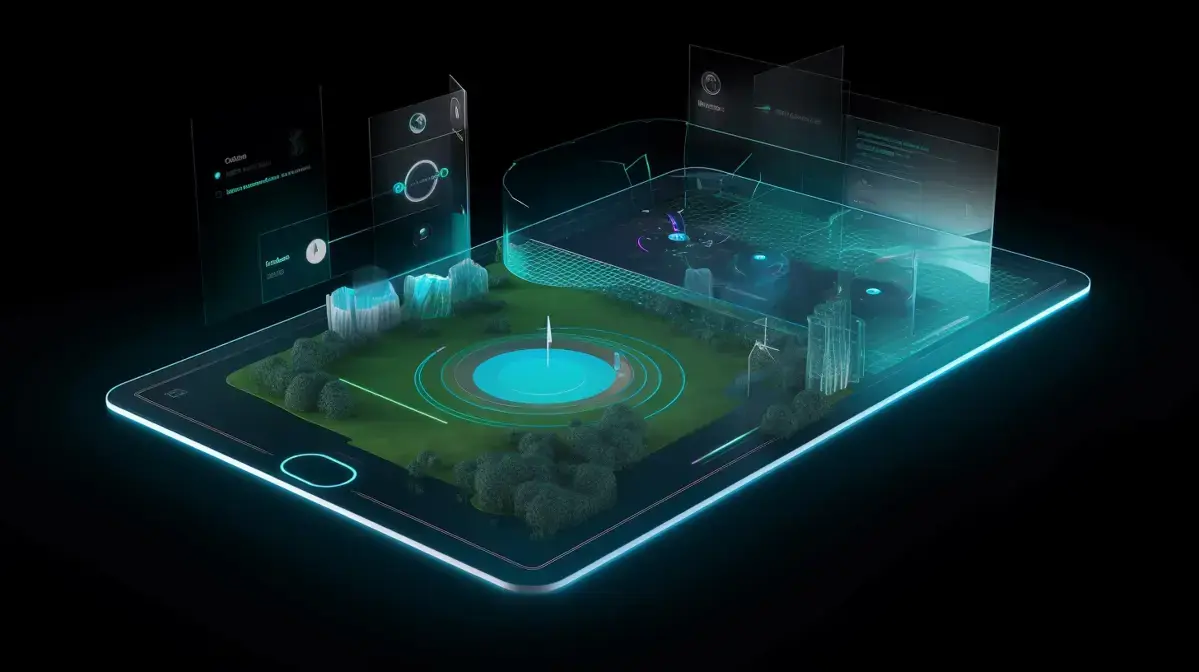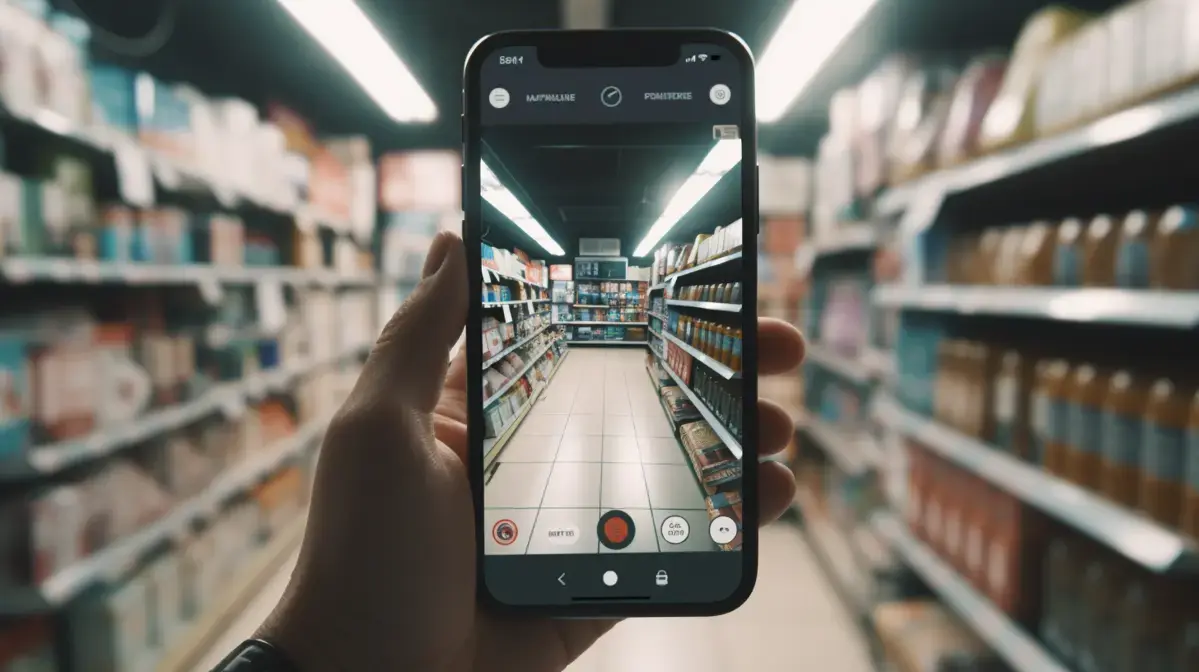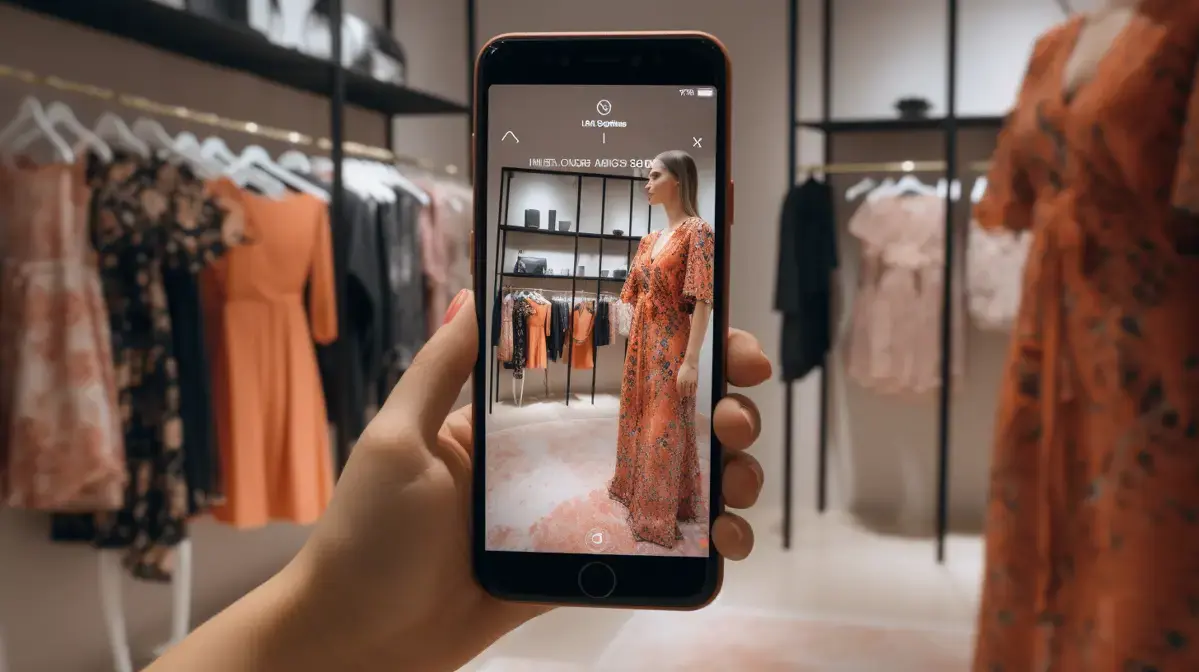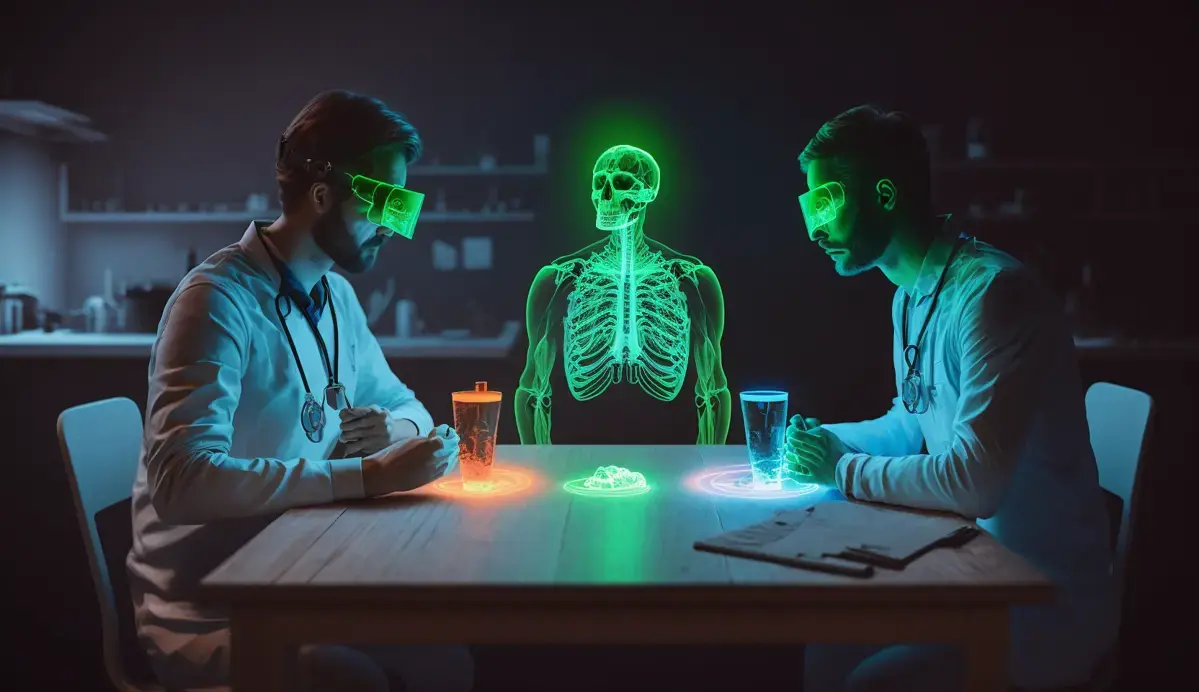Augmented Reality (AR) has revolutionized the education sector by providing immersive learning experiences to students. AR technology overlays digital information on real-world objects using a smartphone or tablet camera, creating an interactive and engaging environment for learners.
One performant feature of AR in education is that it enhances retention rates. Studies have found that learners who use AR tools tend to have better long-term memory retention compared to those who learn through traditional methods. This is because the use of augmented reality helps students visualize abstract concepts, making it easier for them to remember what they learned.
AR also fosters collaboration and interaction among peers as well as between teachers and students during lessons. Students can work together in groups using shared virtual spaces created with AR-enabled devices, enhancing cooperation skills.
Another benefit of incorporating augmented reality into teaching is its ability to bring history alive through experiential learning opportunities like virtual field trips or historical re-enactments powered by mixed/augmented reality technology, allowing you to interact with 3D artifacts from different locations around the world, which was not previously possible without leaving your classroom.
Augmented Reality presents numerous benefits in educational settings; improving knowledge acquisition leading higher student engagement creating unique way-of-learning experience opening up new avenues for extending our reach beyond physical limitations thus bridging gaps between teacher-student interactions/engagements. An interesting overview over applications can be read here: Augmented Reality
Table Of Contents
- Key Points
- Introduction: Understanding Augmented Reality in Education
- Early History of Augmented Reality in Education
- The Evolution of Augmented Reality Technology for Educational Purposes
- Interesting Facts
- Impact of Augmented Reality on Student Learning and Engagement
- Successful Case Studies of Implementing Augmented Reality in the Classroom
- Challenges and Limitations of Using Augmented Reality in Education
- FAQs
- Key Takeaways

Key Points
- Augmented reality (AR) has been used in education since the 1990s, primarily for training and simulation purposes.
- The emergence of mobile devices with AR capabilities has led to increased use of AR in classrooms for interactive learning experiences.
- AR can enhance student engagement and understanding by providing immersive visualizations and simulations that complement traditional teaching methods.
- The future potential of AR in education includes personalized learning experiences, virtual field trips, and remote collaboration among students from different locations.
Understanding Augmented Reality in Education
Augmented Reality (AR) is an exciting technology that has been shaking up the world of education. The ability to enhance real-world experiences with digital overlays can bring textbooks and lessons to life, providing students with a more interactive and engaging learning experience.
Teaching complex concepts like geometry or anatomy can be challenging, but AR makes it easier for both students and teachers. Imagine a classroom where instead of trying to visualize abstract geometric shapes in their minds, learners can see them pop-up before their eyes. With 3D models floating freely around the room as if they were tangible objects. This immersive approach not only helps learners retain information better but also motivates them by making learning fun.
Apart from enhancing academic subjects’ teaching through gamification techniques using tools such as Quizlet’s augmented reality flashcards., museums across the world are taking advantage of AR’s potential; bringing exhibits closer to people than ever before. By simply scanning exhibit markers with mobile devices incorporating image recognition capabilities – museumgoers get access instantaneously on-the-spot detailed content about artifacts without having too much text on walls puting off future visits.
Augmenting Reality is already revolutionizing modern-day education- leading no stone unturned in today’s age ; every aspect seems within its reach- impacting not just virtual spaces alone but even contributing significantly towards improving physical ones.
Early History of Augmented Reality in Education
Augmented Reality (AR) is a game-changer in the field of education. It has revolutionized the way students learn by enabling them to interact with virtual objects and visual aids, providing an immersive learning experience that enhances their understanding of complex concepts. As an expert in AR technology, I have seen firsthand how this innovative tool can transform classrooms and make learning more engaging than ever before.
Imagine sitting in a science class where you are using your smartphone to examine 3D models of human anatomy or exploring ancient ruins through a tablet device without leaving your desk -this is now possible with AR. Teachers can create scenarios that bring real-world experiences into their classrooms, making lessons more relevant and exciting. Augmented Reality brings life to dull textbooks by enhancing illustrations and giving context-rich information.
When implemented correctly, AR creates opportunities for hands-on exploration allowing learners’ role-play as characters or objects inside augmented environments helps instructions like never before; this concept gives them memories they won’t forget easily because it anchors new knowledge firmly into long-term memory banks.
The potential applications for Augmented Reality are endless – from language immersion programs which take you on virtual trips around the world while speaking various languages effortlessly- all thanks to advancements brought about by innovation-driven educational approaches aimed at making every child’s dream come true.
The Evolution of Augmented Reality Technology for Educational Purposes
Augmented Reality (AR) is a revolutionary technology that is changing the way we learn and interact with the world around us.
Imagine a classroom where students are transported to different time periods, geographic locations or even fictional worlds just by using their smartphones or tablets. The possibilities are endless and exciting. With AR, learning becomes immersive, engaging and fun.
One of the best things about AR in education is its ability to cater to different learning styles. Visual learners can explore concepts through interactive 3D models while auditory learners can listen to audio instructions or explanations as they engage with digital content.
In one experience at an elementary school in London, for instance, children used iPads equipped with Google Expeditions apps, which augmented elements from outer space such as stars, projecting them into classrooms. This allowed each student to see exactly what was described but also be able to zoom & rotate it on-screen, creating almost like a personal planetarium experience per child. Thus, enabling enhanced understanding of theoretical physics via hands-on virtual interaction made possible through Augmented Reality Technology integration. Kids could get up close & personal with every detail without having to leave their seats, making sure no important details were missed out. This was thanks to the clever technological advances that had been implemented within the educational curriculum, making science lessons more fun than ever before.
Overall AR has huge potential when it comes enhancing overall quality experiences within all levelled institutions across boardrooms, classroom settings giving users phenomenal access some most advanced technological solutions available today.
Interesting Facts
- The concept of augmented reality was first introduced in the 1960s by Ivan Sutherland, who developed a head-mounted display system that overlaid computer-generated graphics on top of real-world objects.
- Augmented reality technology has been used in military training since the early 2000s to simulate realistic combat scenarios and improve soldiers’ situational awareness skills.
- In recent years, augmented reality has gained popularity as an educational tool for teaching complex concepts such as anatomy, physics and chemistry. Research indicates that AR can improve student engagement and retention rates when compared to traditional classroom methods.
- The global market for AR education is projected to reach $1.96 billion by2026 according to a report by Markets and Markets.

Impact of Augmented Reality on Student Learning and Engagement
Augmented Reality (AR) technology has taken the world by storm in recent years, revolutionizing various industries and changing how we interact with the world around us. In education, AR is also making waves as an innovative tool that enriches learning experiences for students of all ages. The use of this emerging technology in classrooms opens up a wide range of opportunities for learners to explore complex concepts and engage with their environment like never before.
As someone who has been immersed in the world of AR for many years, there’s nothing quite like watching students light up when they see their favorite subject come to life through an interactive experience. Whether it’s exploring ancient civilizations or diving into the inner workings of human anatomy, AR offers new perspectives on traditional teaching methods that captivate learners’ attention and encourage them to actively participate in their own learning journey.
One example where AR is being utilized effectively is history lessons where students can visit historical sites virtually using holograms projected from mobile devices right within classroom walls. Students can also examine artifacts without risking damage so they may better understand what makes them important objects worth studying today.
In short: Augmented Reality has shown great promise as a game-changing tool that enhances educational outcomes by engaging learners authentically while keeping pace with modern technological advancements.
Successful Case Studies of Implementing Augmented Reality in the Classroom
Augmented reality (AR) is one of the most fascinating technologies in today’s world. In education, it has the potential to transform learning by breaking down traditional barriers and providing an interactive and immersive experience. AR technology overlays digital content onto real-world objects through a smartphone or tablet’s camera, making learning more engaging and memorable.
For Augmented Reality expert, Jim, the impact of AR on education was first brought into focus when he saw his nephew using it to learn about dinosaurs at school. He was amazed at how captivated his nephew was by this new way of interaction with information – even after class time had ended. This led Jim into exploring further practical applications for AR in education settings.
In fact, there are numerous ways that teachers can use augmented reality to help students understand complex concepts. For example: imagine experiencing Ancient Rome or Greece on your phone screen as you walk around a museum exhibit – with added visualisations such as ruins being brought back to life right before your eyes; Or envisioning written words transforming into 3D models just above a book’s page during literature lessons; The possible ways educators can incorporate this exciting technology are endless.
Overall though – while still relatively new within schools worldwide- many indicators suggest that its adoption will only grow from hereon out meaning we should expect more widespread incorporation across educational systems over coming years.
Challenges and Limitations of Using Augmented Reality in Education
Augmented Reality is a technology that has been around for a while, but it’s only recently that its true potential has started to be realized. Its ability to superimpose digital information onto the world around us makes it an effective tool in various industries, and one of those industries is education.
For years, students have been confined to textbooks and lectures as their primary sources of learning. But with Augmented Reality, teachers are now able to bring subjects like history and science alive right before their students’ eyes. Imagine being transported back in time through your smartphone or tablet; walking through ancient ruins as they once were centuries ago or seeing extinct animals come back to life right before you.
AR also opens up new possibilities for hands-on learning experiences without any of the risks involved with real-life experiments. Students can watch virtual chemistry reactions unfold on top of lab tables or observe the inner workings of human anatomy from every angle possible – all thanks to AR technology.
Overall Augmented Reality provides educators with tools that engage children actively rather than passively consume content even at home on mobile devices.
FAQs
1. What is augmented reality?
Augmented reality (AR) refers to the integration of digital information with the user’s environment in real time.
2. How long has AR been used in education?
AR has been used in education for over a decade, with early examples dating back to 2007.
3. What are some benefits of using AR in education?
Some benefits of using AR in education include increased engagement and motivation, improved spatial reasoning skills, and enhanced learning outcomes.
4. Are there any limitations or challenges associated with implementing AR technology?
Yes, some limitations and challenges associated with implementing AR technology include cost barriers, technical difficulties and concerns around privacy/security issues related to student data collection through these technologies may arise if not properly addressed during implementation phase.

Conclusion
As we have seen, the use of augmented reality in education is not a new concept. The earliest experiments with AR date back to the 1960s and 70s. However, it’s only in recent years that advances in technology have made it possible for AR to become more accessible and affordable.
Today, both educators and students are finding innovative ways to incorporate this technology into their learning experiences. From virtual field trips to interactive textbooks, AR offers endless possibilities for enhancing traditional educational methods.
While there are still some challenges that need to be addressed – such as ensuring equitable access across all communities – the potential benefits of using augmented reality in education cannot be ignored.
With continued investment from both public organizations and private companies alike, we can expect even more exciting developments on the horizon when it comes to using augmented reality as an educational tool.
Key Takeaways
- Augmented reality has been used in education for over a decade and continues to evolve.
- The use of AR in education can enhance learning experiences by providing interactive and engaging content.
- AR technology helps students visualize complex concepts, improve spatial reasoning skills, and promote hands-on learning.
- The implementation of AR in education requires careful planning, training for teachers, adequate resources, and accessibility considerations.

